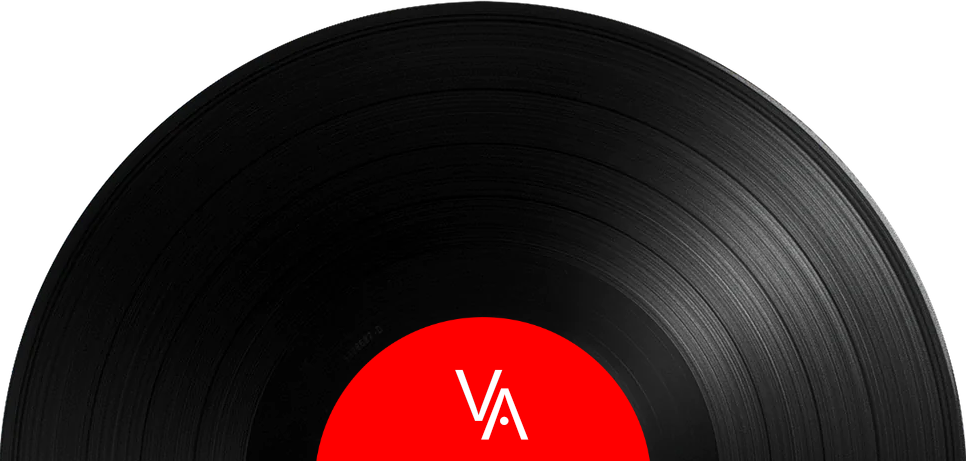
Recorded in 1959, Kind Of Blue is almost universally considered to be one of the greatest – if not the greatest – jazz LP of all time. It is officially the unsurpassed best selling jazz LP ever released, and is certainly one of the most influential. I have several different versions of this album on vinyl and CD, and right now I’m listening to a Classic Records reissue from 1995. I’m also staring at the framed Miles Davis autograph that hangs on the wall beside the turntable.
It’s such a treat to listen to this recording. Based entirely on modality (in contrast to Davis’s earlier work with hard bop), the album was composed as a series of modal sketches in which each performer was given a set of scales that outlined the loose parameters of their improvisation. Modal jazz of this type was not unique to Kind Of Blue. Davis himself had previously used the same method on his 1958 Milestones album, the ’58 Sessions, and Porgy and Bess – but Kind Of Blue is the LP that caught everyone’s attention.
Although complicated in its structure, it is also warm and accessible and is the jazz album even Metallica fans can relate to. It brought together seven now-legendary musicians in the prime of their careers: tenor saxophonist John Coltrane, alto saxophonist Cannonball Adderley, pianists Bill Evans and Wynton Kelly, bassist Paul Chambers, drummer Jimmy Cobb and trumpeter Miles Davis, who was only 32-years-old at the time.
With Evans, Davis worked up some basic sketches and gave them to the musicians as they arrived for the session on March 02, 1959. He indicated he wanted the music to be recorded in one take.
The first tune recorded was Freddie Freeloader, and the first take is the one they went with. The second tune recorded was So What, which opens the record brilliantly. After the first day the musicians would not get back together until seven weeks later to complete the record, and the time away served to allow additional influences such as flamenco to creep in.
For All Blues, Davis plays with the simplest of elements, taking a standard 4/4 time blues and giving it a waltzy feel in 6/8. This allowed Cannonball Adderley to return to his big-band roots, which also lent the project a flavour that seems to have been wholeheartedly encouraged by the atmosphere of spontaneity laid out by Davis.
Most people don't know that Columbia Records eventually discovered, years later, that Side A of Kind Of Blue had been issued a quarter tone too sharp as a result of a slow-running tape machine. Upon discovering the mistake, the label reissued the recording with the speed corrected. This Classic Records reissue contains the record as it was originally released, plus a second disc with the correct-speed Side A backed by the only complete outtake that exists from the sessions - Flamenco Sketches. The original Classic reissue - now long out of print and extremely collectible - has since been reissued.
In the end Kind Of Blue might have been just another session for the musicians involved, but it would very quickly become a classic and is still considered fresh today. Every time I play it I hear something new. So What became the tune on the album, the one that every musician simply has to know. The moment the record starts to play it grabs me, and it never lets go. The perfect track, placed perfectly on a near perfect masterpiece. There aren't many records that are this good.
This pressing is a glorious listening experience. The sound is extraordinary, the vinyl quiet. The spacing of the musicians is very nice and it's easy to hear all the little intricacies - the brushes, the trumpet hammers, the musicians breathing - that make the record "real" and are hard to experience on many other iterations. For too many reasons to mention, this pressing is …
Recorded in 1959, Kind Of Blue is almost universally considered to be one of the greatest – if not the greatest – jazz LP of all time. It is officially the unsurpassed best selling jazz LP ever released, and is certainly one of the most influential. I have several different versions of this album on vinyl and CD, and right now I’m listening to a Classic Records reissue from 1995. I’m also staring at the framed Miles Davis autograph that hangs on the wall beside the turntable.
It’s such a treat to listen to this recording. Based entirely on modality (in contrast to Davis’s earlier work with hard bop), the album was composed as a series of modal sketches in which each performer was given a set of scales that outlined the loose parameters of their improvisation. Modal jazz of this type was not unique to Kind Of Blue. Davis himself had previously used the same method on his 1958 Milestones album, the ’58 Sessions, and Porgy and Bess – but Kind Of Blue is the LP that caught everyone’s attention.
Although complicated in its structure, it is also warm and accessible and is the jazz album even Metallica fans can relate to. It brought together seven now-legendary musicians in the prime of their careers: tenor saxophonist John Coltrane, alto saxophonist Cannonball Adderley, pianists Bill Evans and Wynton Kelly, bassist Paul Chambers, drummer Jimmy Cobb and trumpeter Miles Davis, who was only 32-years-old at the time.
With Evans, Davis worked up some basic sketches and gave them to the musicians as they arrived for the session on March 02, 1959. He indicated he wanted the music to be recorded in one take.
The first tune recorded was Freddie Freeloader, and the first take is the one they went with. The second tune recorded was So What, which opens the record brilliantly. After the first day the musicians would not get back together until seven weeks later to complete the record, and the time away served to allow additional influences such as flamenco to creep in.
For All Blues, Davis plays with the simplest of elements, taking a standard 4/4 time blues and giving it a waltzy feel in 6/8. This allowed Cannonball Adderley to return to his big-band roots, which also lent the project a flavour that seems to have been wholeheartedly encouraged by the atmosphere of spontaneity laid out by Davis.
Most people don't know that Columbia Records eventually discovered, years later, that Side A of Kind Of Blue had been issued a quarter tone too sharp as a result of a slow-running tape machine. Upon discovering the mistake, the label reissued the recording with the speed corrected. This Classic Records reissue contains the record as it was originally released, plus a second disc with the correct-speed Side A backed by the only complete outtake that exists from the sessions - Flamenco Sketches. The original Classic reissue - now long out of print and extremely collectible - has since been reissued.
In the end Kind Of Blue might have been just another session for the musicians involved, but it would very quickly become a classic and is still considered fresh today. Every time I play it I hear something new. So What became the tune on the album, the one that every musician simply has to know. The moment the record starts to play it grabs me, and it never lets go. The perfect track, placed perfectly on a near perfect masterpiece. There aren't many records that are this good.
This pressing is a glorious listening experience. The sound is extraordinary, the vinyl quiet. The spacing of the musicians is very nice and it's easy to hear all the little intricacies - the brushes, the trumpet hammers, the musicians breathing - that make the record "real" and are hard to experience on many other iterations. For too many reasons to mention, this pressing is …



